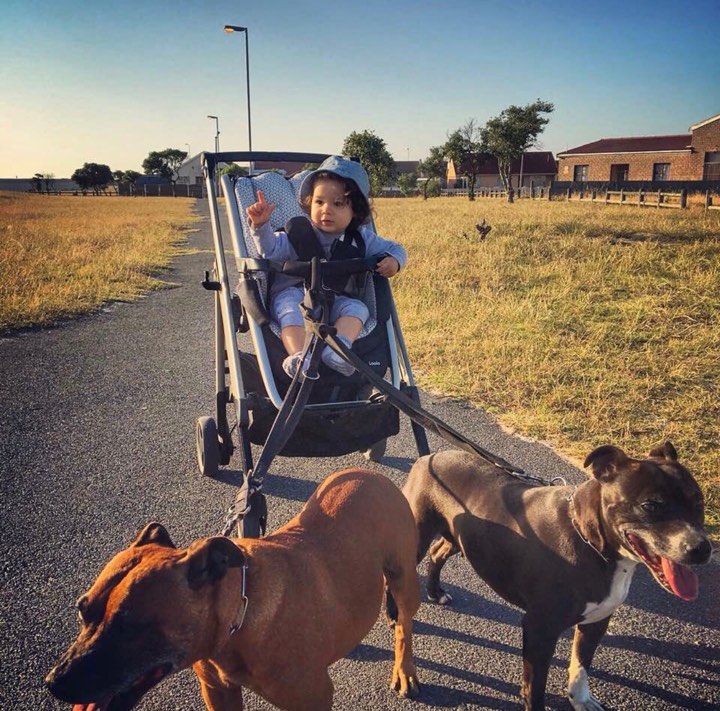A skittish dog and a teetering toddler are two things that don’t belong in the same equation. With that in mind, here are a handful of tips to consider when the cutest things in your life come together.
Remember to always supervise doggie and kiddie playtime. In an ideal world, your dog will have already been socialized to children; but if this isn’t the case, worry not!
Mimic the behaviour of a child around your dog before meeting. This means doing things like stroking that leads into gentle tugging, or playing with their tail.
Be sure to reward with a treat the whole time, to increase your buddy’s tolerance to the rambunctious tendencies of kids.
“This is how you…”
If you’re dealing with a toddler, the following may not apply, but educating children on how to act around dogs is an easy way to make sure no funny business transpires.
Always ensure your child understands that dogs are not toys. Showing them how to gently handle a dog (no tail pulling or head bonking!) will prevent testy situations between the two.
Let your child know that it’s best to stay away from the dog during feeding time. Teach them how to detect the signs of an uncomfortable dog, like a tucked tail between the legs or a growl—things that might seem obvious to an adult, but not so much to a little kid.
Repetition
Repetition is key. Try the “Time Out” technique. In the event that your dog misbehaves, ASPCA recommends isolating your dog in a different room for 30 seconds or so before you let them back in the same room as your child.
If your dog is able to mind his or her manners while in the presence of children, they should be rewarded with a treat. Repeat, repeat, repeat.
If at first you don’t succeed, try again! You can even allow your child to feed the treat—just make sure they remember to feed from the palm of their hand and to never place their fingers near the dog’s mouth.
On puppies
If you’re getting your dog as a puppy, allow the pup to naturally make their way over to your child when they first meet.
Include your child on walks with your dog—just being around one another will help the two become more comfortable together.
Exposing young dogs to a variety of positive experiences (especially with kids) early on will set the stage for an adorable and long-lasting friendship between the two.
Later in the relationship, encourage activities like fetch, which will further cement their bond.
Blog via: Dr Karen Becker
Photo cred: Grant and Candice Powell

